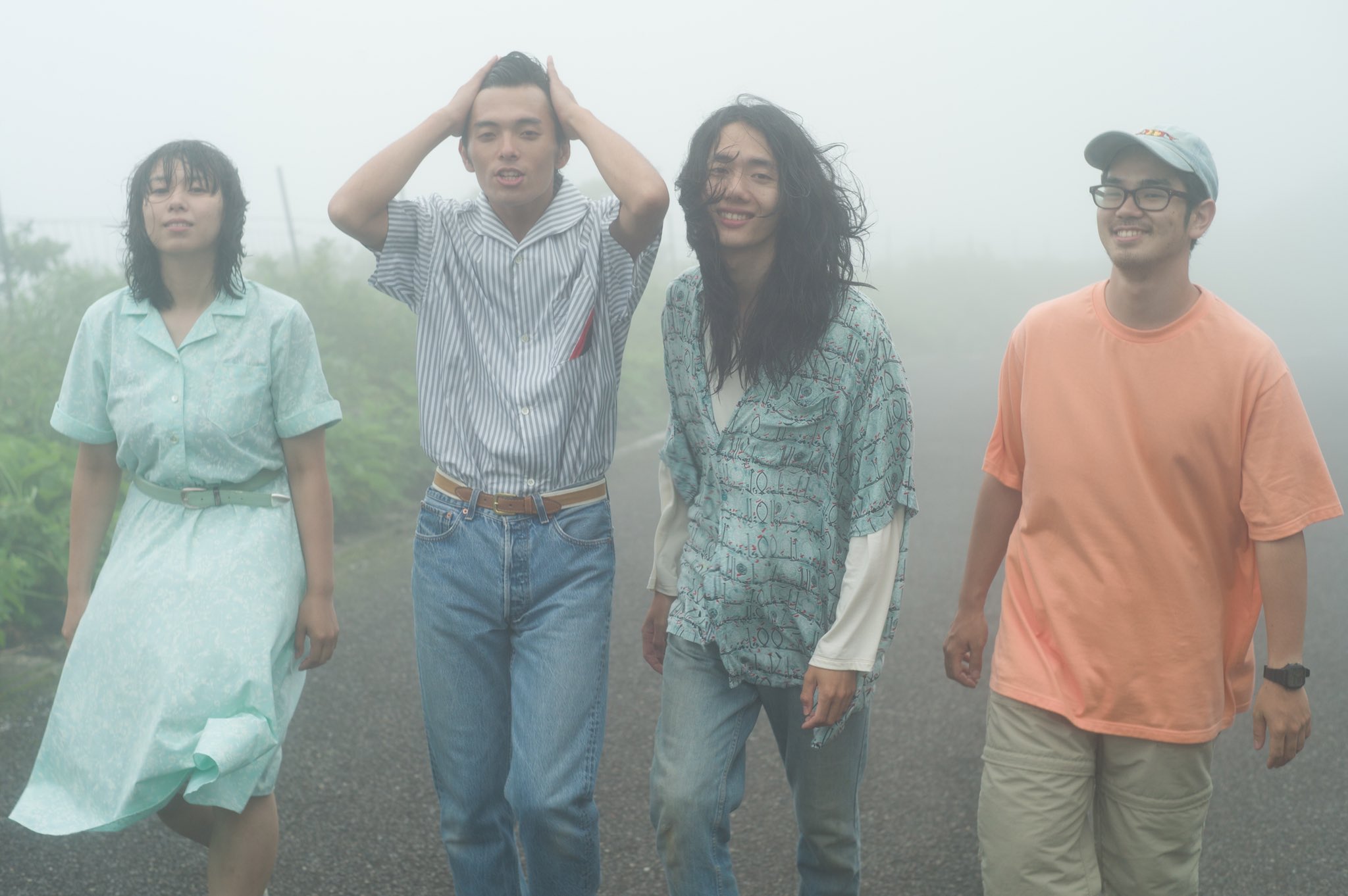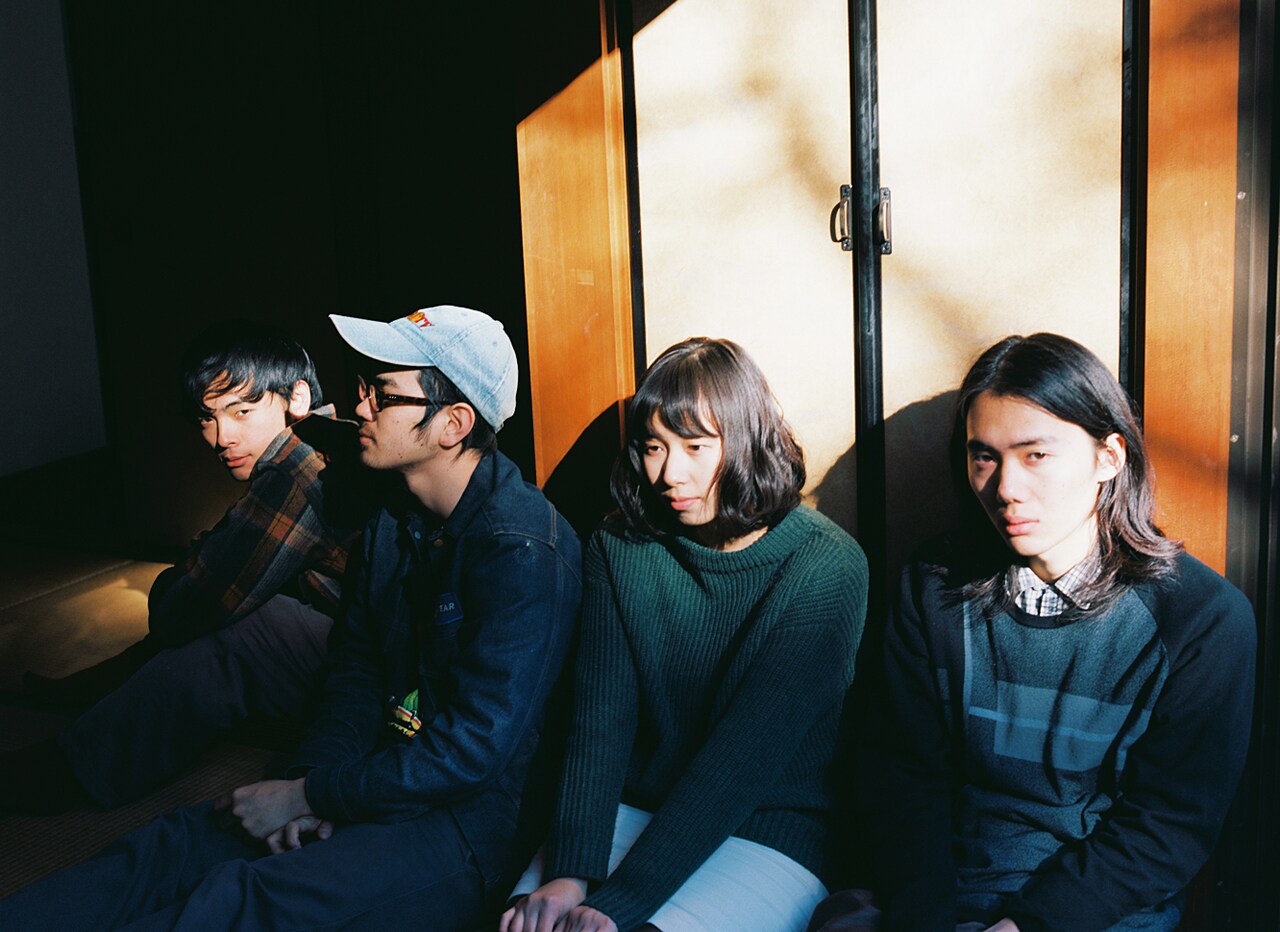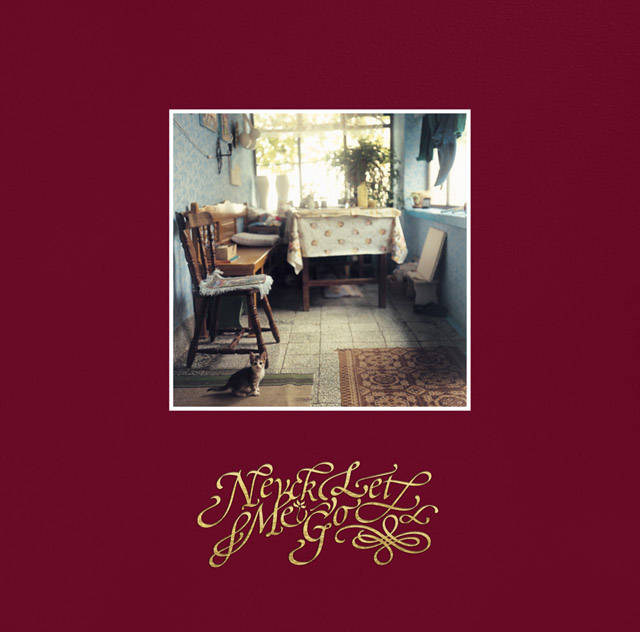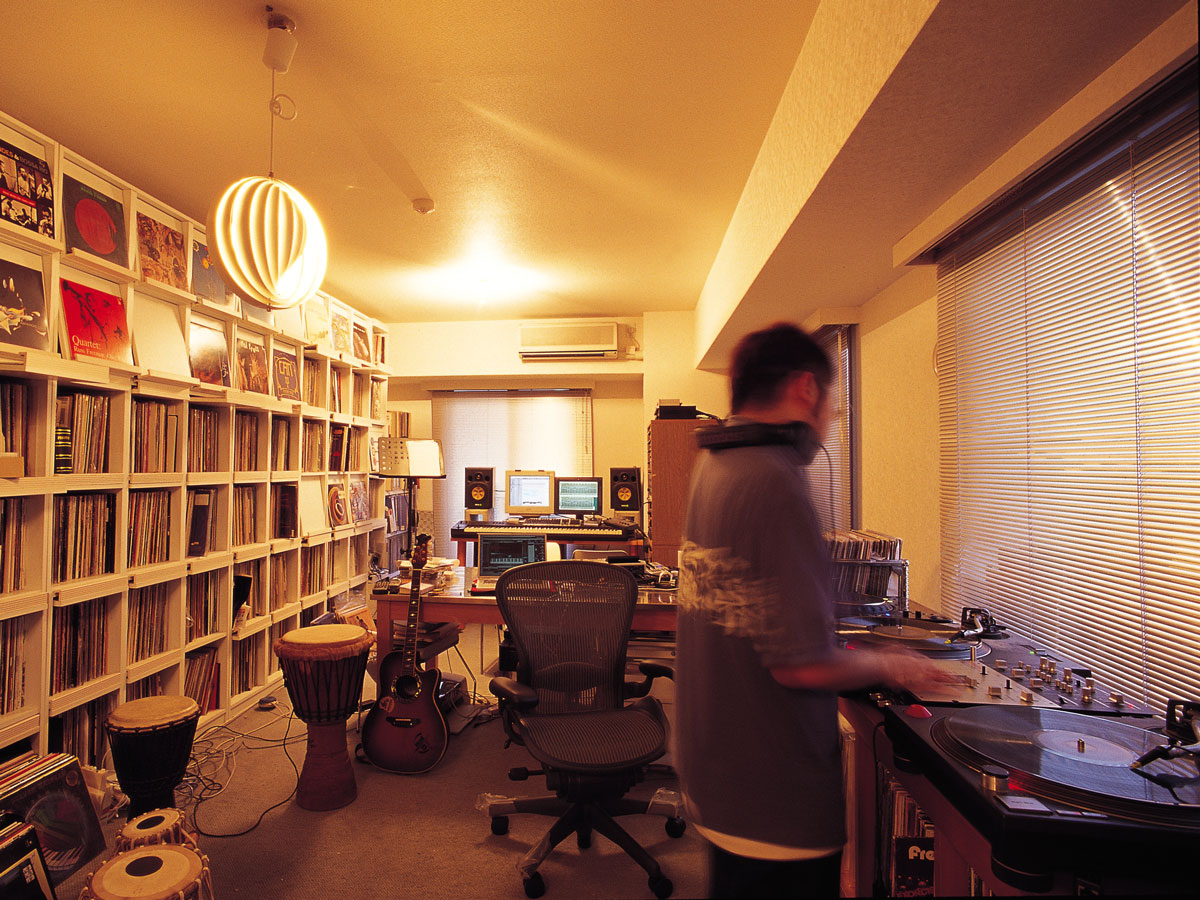Here is an interview with MONO NO AWARE members Tamaoki Shukei and Kato Seijun. The interview focuses on how the pair first met, as well as on the band’s sophomore album. Enjoy!
Interview & text: Miyake Shoichi (Japanese text)
English translation: Henkka
MONO NO AWARE links: Website, Instagram, Facebook, Twitter
Note: You can buy AHA on CDJapan.

MONO NO AWARE
(L-R) Takeda Ayako, Tamaoki Shukei, Kato Seijun, Yanagisawa Yutaka
MONO NO AWARE have just completed their second album, AHA.
Ever since the band’s beginnings, there has been no one else like them when it comes to musical expression. “This part is rock, this part is pop“—there are no such borderlines in their music. And yet, their musical imagery carries with it a contemporaneity which organically reminds the listener of all kinds of different cultures, along with a synchronicity which makes it feel like you’re tripping between reality and some parallel world.
Those aspects of the band’s music become even more vivid on this work, with the evolution in their sound production and songwriting making one’s earliest childhood memories rise to the surface.
Having accompanied the band for the filming of their music video for this album’s lead song, “Tokyo,” we then conducted an interview with their songwriter/vocalist/guitarist Tamaoki Shukei and guitarist Kato Seijun.
We visited their hometown of Hachijojima, Tokyo—a 55-minute direct flight from Haneda Airport. While the town is actually still a part of Tokyo, that sense of travel I got from going down there and standing in that environment, surrounded by nature, it gave me flashbacks of that peculiar feeling one experiences when listening to MONO NO AWARE—a sense of, “It’s my first time here, and yet somehow it’s like I know this place.”



